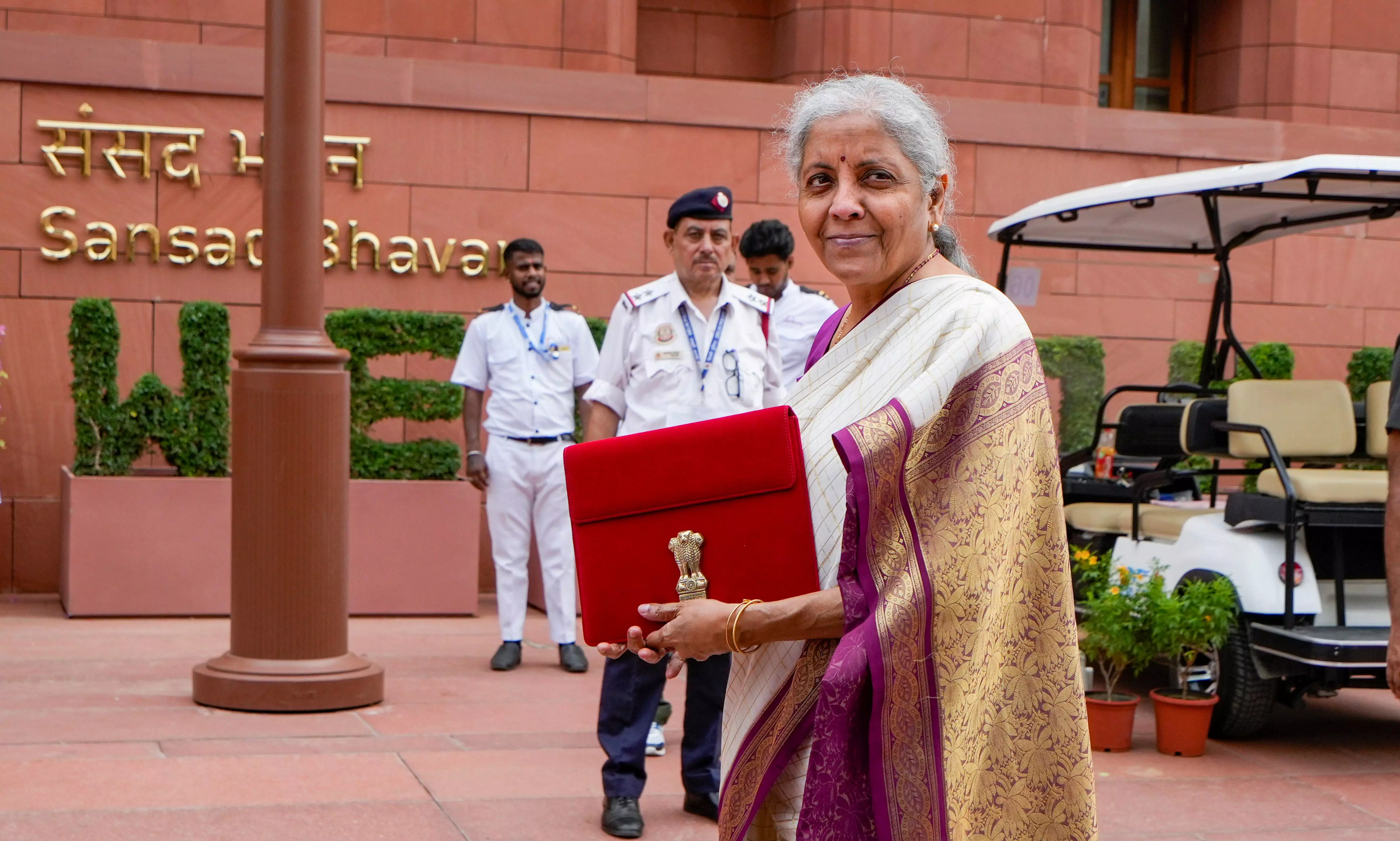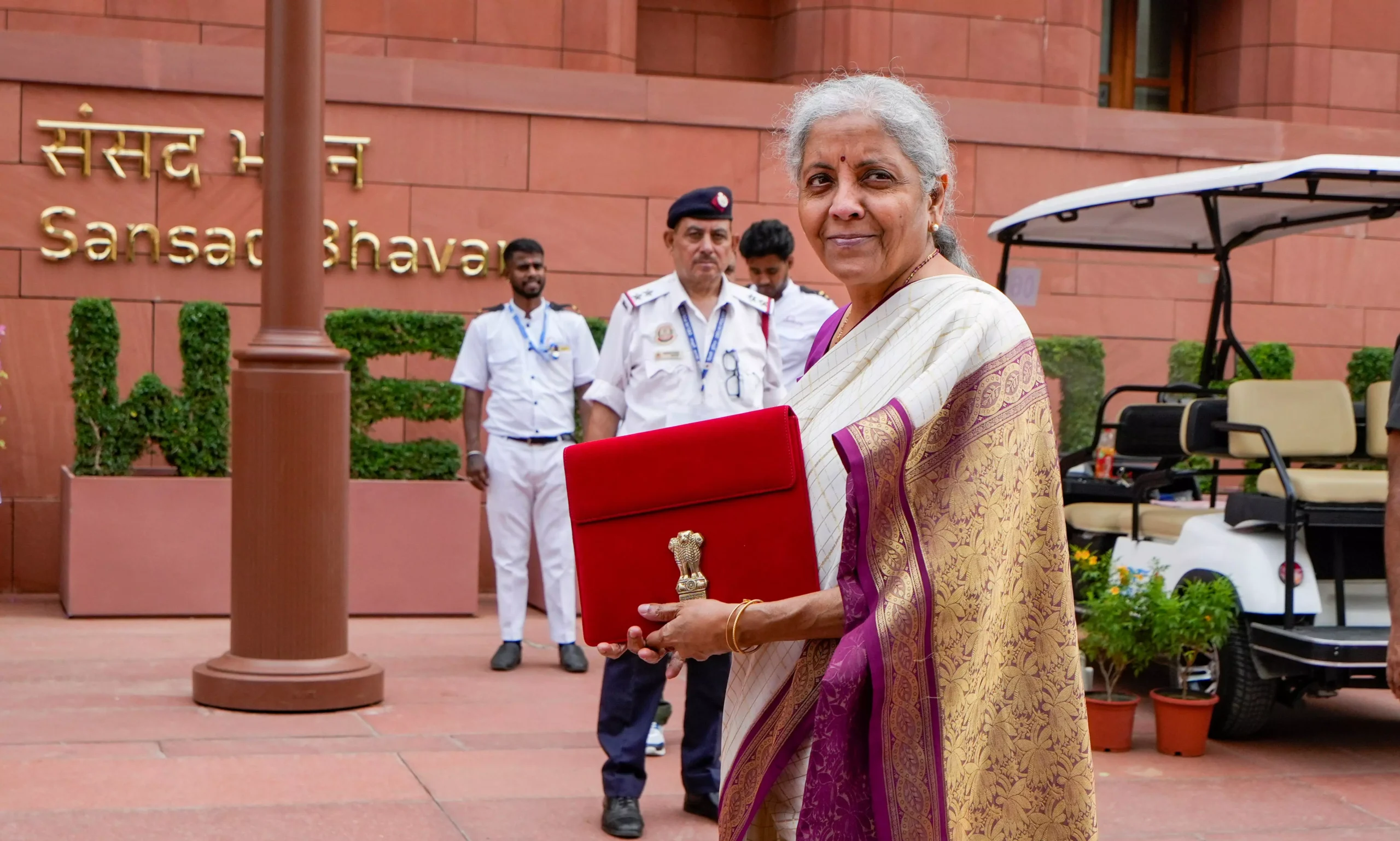
New Delhi: The long-awaited booster Budget is in place as the government on Tuesday has focused mainly on four key areas — the poor, women, youth and farmers. Besides, it has also prioritised nine segments from kisan to corporate, including employment, education, skill development for youth and women, the middle class and salaried people, sops for micro, small and medium enterprises (MSMEs) and climate resilient steps for farmers as well.
Nevertheless, there is no denying the fact that the Narendra Modi 3.0 government’s first Budget may be a compulsion for the government, but it is “blessing in disguise” for its allies (states like Andhra Pradesh and Bihar) as the Centre announced special financial packages for them to boost their social and infrastructure spend. The Budget earmarked substantial funds for infrastructure projects in Bihar, with Rs 60,000 crores allocated for expressways, power plants, heritage corridors, and new airports and for Andhra Pradesh, received Rs 15,000 crores as financial aid via multilateral agencies.
Keeping the government’s continuation in mind, this year’s Budget has some few hits and misses. To name a few, what is kept unchanged in this Budget from the Interim Budget in February this year, are capital expenditure or capex outlay and old regime taxation. What has been added are proposals for a review of the Income-Tax Act, changes in new taxation regime — more simplification of income-tax for individuals as well as corporates, capital gain tax and digitisation of payment process, among others.
While briefing the media after tabling the Budget for fiscal year 2024-25, Union finance minister Nirmala Sitharaman told reporters that she skipped the opening address as she announced everything in her speech in Parliament. Showing the graph of “Theme of Union Budget – EMPLOYMENT”, she said: “This theme EMPLOYMENT, ie; E for employment & education, M for MSMEs, P for productivity, L for land O for opportunity, Y for youth, M for middle class, E for energy security, N for new generation reforms and T for technology speaks all for the Budget this year.”
During the presentation of the Union Budget 2024-25 in Parliament, Ms Sitharaman also said that despite the global economy remaining under the grip of policy uncertainties, India’s economic growth continues to be the shining exception and will remain so in the years ahead. “This year’s total Budget outlay amounts to Rs 48.21 lakh crores, while a large part of this went to Central sector schemes and other Central sector expenditure amounting worth Rs 30.07 lakh crores,” she said.
“In this Budget, we particularly focus on employment, skilling, MSMEs, and the middle class. India’s inflation continues to be low, stable and moving towards the four per cent target. Core inflation (non-food, non-fuel) currently is 3.1 per cent and steps are being taken to ensure that supplies of perishable goods reach the market adequately,” the finance minister added.
The finance minister further said that the Budget allocated Rs 2 lakh crores over the next five years for employment generation schemes and increased spending for states governed by the Modi-led BJP government’s new coalition partners. “At the same time, the middle class and salaried people got a big relief in tax as the standard deduction was increased by 50 per cent to Rs 75,000, and tax slabs were adjusted for taxpayers opting for the new income- tax regime,” she said.
Ms Sitharaman also introduced tax reforms, including the abolition of the “angel tax” for all start-up investors, reduction of customs duty on mobile phones and gold, and simplification of capital gains tax. However, the increase in securities transaction tax (STT) on futures and options of securities led to a decline in the stock markets.
With rural distress and unemployment being blamed for the BJP losing its Parliament majority, Ms Sitharaman in her seventh straight Budget provided Rs 2.66 lakh crores for rural development and maintained spending on long-term infrastructure projects at Rs 11.11 lakh crore to boost economic growth.
Besides Rs 2 lakh crores provided over a five-year period for schemes and initiatives to facilitate employment, skilling and other opportunities for 4.1 crore youth, the finance minister also said: “I have made a provision of Rs 1.48 lakh crores for education, employment and skilling.”
In a bid to reduce the tax burden for the middle class, she raised standard deduction — a flat deduction from the total salary earned by an employee in a year before calculating the applicable income-tax rate — by 50 per cent to Rs 75,000 and tweaked tax slabs for taxpayers opting for the new income-tax regime. “This will lead to taxpayers under the new tax regime — which offers lower rates of taxes but permits limited deductions and exemptions — saving up to Rs 17,500 in tax annually,” she said.
To spur employment, the Budget provided for incentives for companies, including paying for one-month salary for first-time employees, incentive at specified sale to both employee and empower with respect to their retirement fund contribution in the first four years of employment and reimbursing employers up to Rs 3,000 per month for two years towards the EPFO contribution of each additional employee.
”Also, a programme to improve skills as well as internships for students and subsidised loans for higher education will be provided, she said. India’s official unemployment rate in urban areas is pegged at 6.7 per cent but private agencies put it at much higher levels,” the finance minister said.
Buoyed by robust tax collections and a higher-than-expected dividend receipt from the Reserve Bank, Ms Sitharaman said the government’s fiscal deficit — the difference between the total revenue earned and total expenditure — will be trimmed to 4.9 per cent of the GDP in 2024-25, below the 5.1 per cent figure estimated in the Interim Budget which she presented in February.
Besides, she also reduced gross market borrowing marginally to Rs 14.01 lakh crores. The Budget for 2024-25 fiscal (April 2024 to March 2025) allocated Rs 1.52 lakh crores for agriculture and allied sectors, aid for building three crore affordable housing units in urban and rural areas, provided credit support to small and medium businesses, raised small loans to Rs 20 lakhs for small business, proposed setting up 12 industrial parks, and provided for setting up a Rs 1,000-crore venture capital fund for the space sector.
